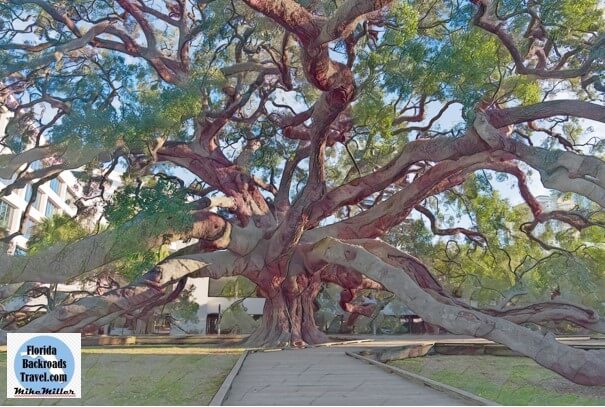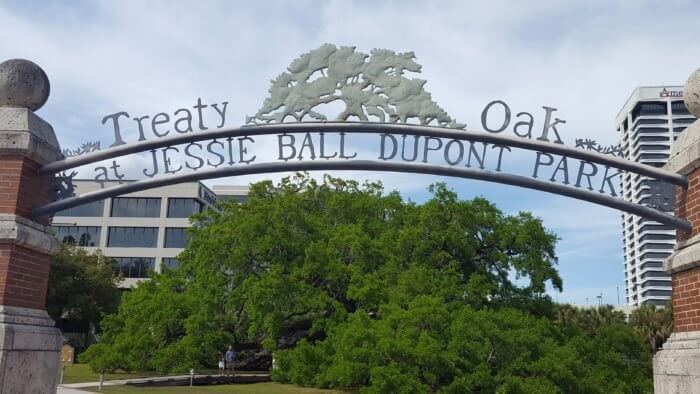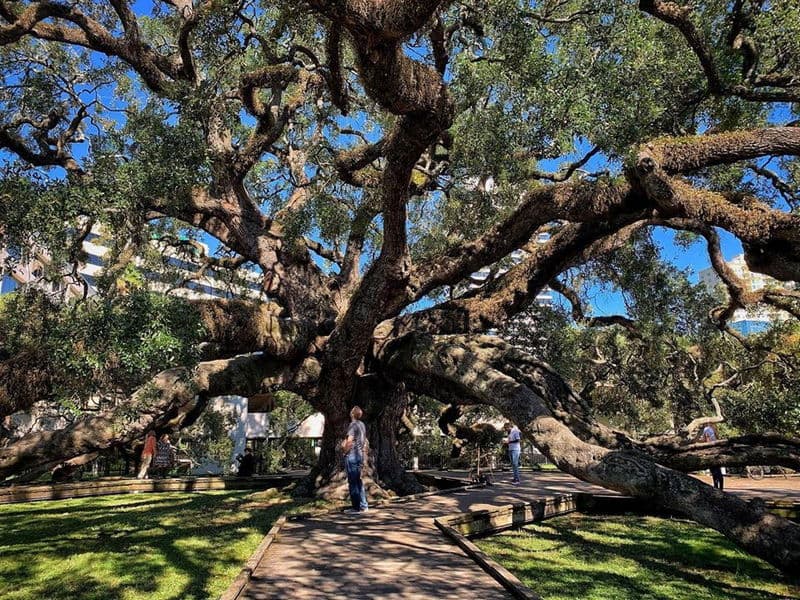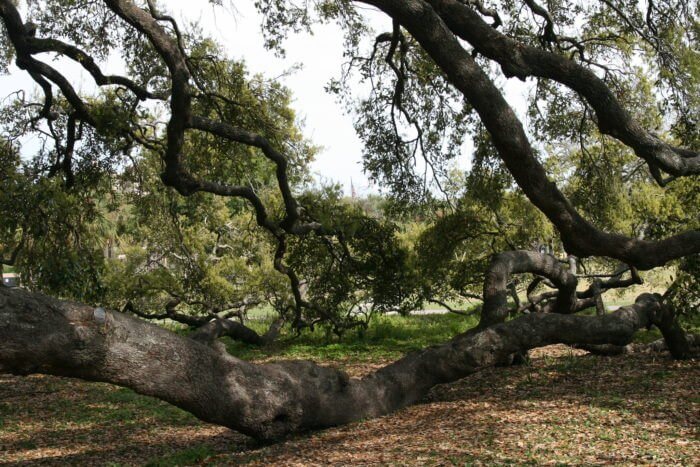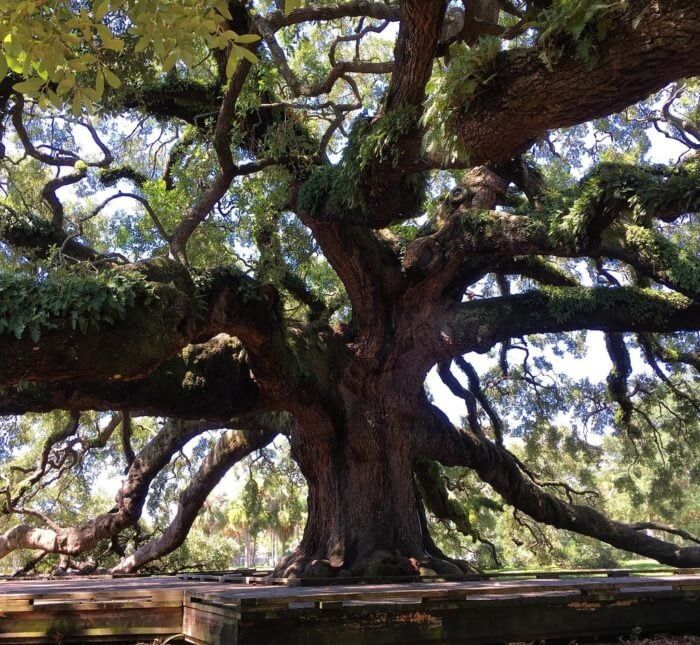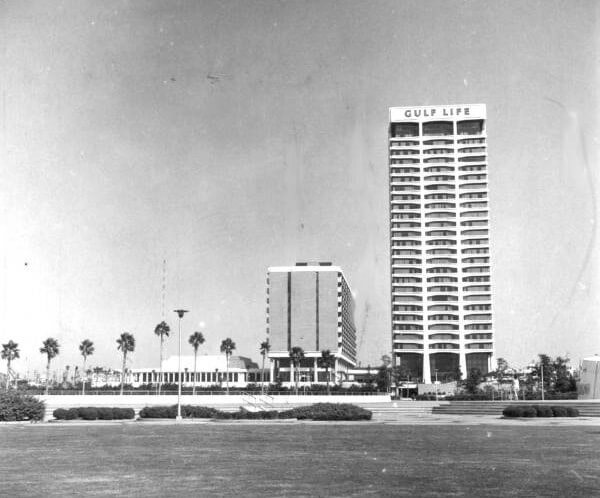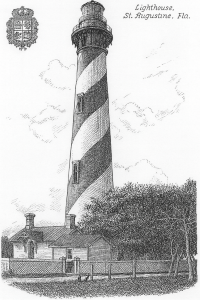- Home
- Tourist Attractions
- Treaty Oak
TREATY OAK
Jesse Ball duPont Park
1123 Prudential Drive
Jacksonville, Florida 32207
By Mike Miller Updated August 24, 2025
Treaty Oak is a Jacksonville icon that may have nothing to do with a treaty, but is still the subject of a great story.
The tree is a Southern live oak estimated to be about 250 years old. Since Jacksonville was founded in 1822, the tree was actually there 50 years before the city was.
The tree has a trunk about 25 feet in circumference, is more than 70 feet tall, and has a canopy of more than 150 feet in diameter.
It is located in Treaty Oak Park in the Southbank neighborhood of Jacksonville on the south side of the St. Johns River.
The formal name of this park is Jessie Ball duPont Park, and that's part of the story.
NOW FOR THE REST OF THE TREATY OAK STORY
In the 1930s developers were interested in building on the land that included the giant oak. That is in fact what the locals always called the tree: The Giant Oak.
A journalist from the Jacksonville Times-Union named Pat Moran decided to come up with a way to save the tree from the developers.
He wrote a column in the newspaper that claimed the giant oak had been the setting of an early peace treaty between local Native Americans and early European settlers.
Soon after his creative writing, the tree began to be called the Treaty Oak.
Along with the Garden Club of Jacksonville, Pat Moran and others began to make locals aware of the tree in attempts to save it.
Salvation came in the form of the Alfred I. duPont Testamentary Trust purchasing the land. Jessie Ball duPont was the wife of Alfred I. duPont, and a member of the garden club.
In 1964 the land including the tree was deeded to the City of Jacksonville with the proviso that it only be used as a public park that would preserve the giant oak.
Over the years the city and others implemented many expensive preservation programs on behalf of the beloved tree. One of the most interesting involves acorns from the Treaty Oak.
A program grows seedlings from the acorns that are then replanted at many different locations in Jacksonville. Hundreds of the seedlings have been planted since the program began in 1986.
Just like us humans, the Treaty Oak has progeny that will live long after it is gone. That could be a long time in the future as many experts predict the tree could live for another 400 years.
The park is a wonderful place to visit and just chill out in the middle of the busy city of Jacksonville. There are paved paths to enhance your visit to the tree.
I get a memory kick when I see the 28 story tall Riverplace Tower visible through the tree's canopy only a stone's throw away.
It was built in 1966 as the Gulf Life Tower and I had a minor role in some of the prestressed concrete testing that was done.
I was a graduate civil engineering student at the University of Florida at the time.
TREATY OAK LOCATION MAP

Florida is the fastest-growing state in the United States and also the fastest-changing. If you see anything in this article that has changed or is in error, please let me know.
Thousands of Florida fans subscribe to our free daily Ezine, Florida Heritage Travel and we have 130,000 followers on Facebook.
By Mike Miller, Copyright 2009-2025
Florida-Back-Roads-Travel.com
Florida Back Roads Travel is not affiliated with or endorsed by Backroads, a California-based tour operator which arranges and conducts travel programs throughout the world.
